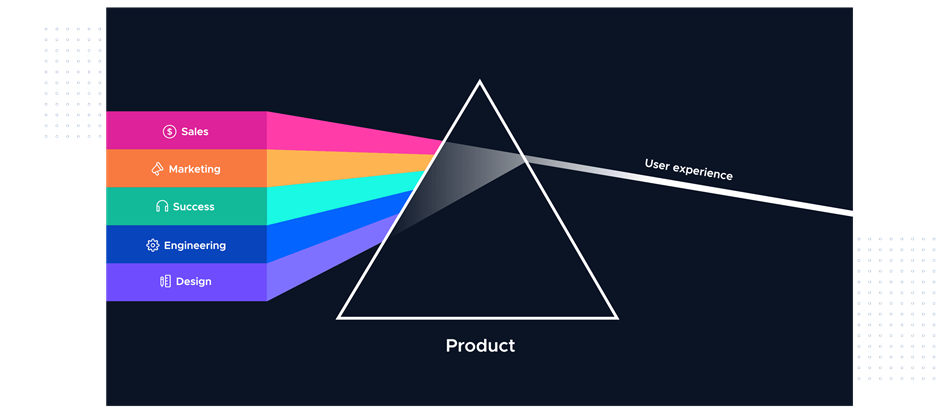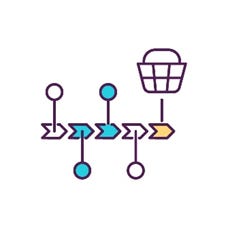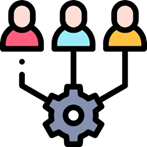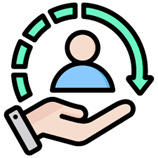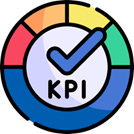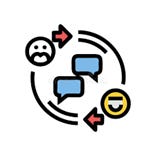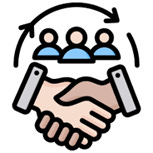CS – the backbone of PLG!
Here’s why I would term [customer success] as the backbone of any org. that's hinging on PLG...
The advent of newer growth models has brought with it a lot of restructuring in the way the teams & orgs tend to function / come together & collaborate towards anchoring those strategies & is seen as a big step forward in establishing them as great growth engines.
For instance: take a start-up that’s employing PLG.
Although you may find the conventional teams like Support, Marketing, Sales in there you would also notice that they don’t seem to take center-stage anymore like they would have if the growth model the org. followed was to be sales / marketing led. And what’s more, you’d also find a few other teams who happen to be entrusted with all the heavy lifting when it comes to catering to those customer journeys, like for instance, Design, Data Science / Analytics & Customer Success.
Ok now, first things first. Let’s get some myths out of the way.
👉 CS is NOT sales
Customer success is often misconstrued as Sales & many are of the opinion that it is just a new fancy term for good old sales. Sales is focused towards acquiring more customers, concentrating more on the ToFu, optimizing for ACQUISITION, adding new customers.
👉 CS is NOT customer support
Customer success is certainly not support given how support teams are tasked with providing timely resolutions for all problems the customers may be facing on the field raised as tickets.
👉 CS is NOT marketing
Customer success certainly differs from marketing in the sense that marketing tends to be focused on fronting the right stuff to the masses, building awareness & evincing interest, often preceding the subsequent steps that lead / convert to sales.
Having said all that, the confusion could be pretty natural for someone who is coming across the term CUSTOMER SUCCESS for the first time. CS could have a quaint overlap with the tasks listed above under those headers (SUPPORT, SALES, MARKETING) per se.
👉 Looking at CS from the angle of sharing relevant content over e-mails / in-App notifications towards building awareness & the possibility of offering personalized experiences in an aim to evince interest could overlap with MARKETING
👉 If one tends to look at it from the perspective of resolving customer issues / concerns, unblocking them & helping them reach their first A-ha or that all-important outcome it could resemble SUPPORT
👉 The need to boost revenues, constantly tracking those related metrics & adhering to those KPIs does indeed have a lot of parallel with SALES
Definition:
“Customer success is a business methodology & organizational function focused on ensuring customers achieve their desired outcomes while using a company's products or services, not just the first time but across their whole lifecycle / journeys”
(source: Wikipedia)
Simply put, Customer Success is just concerned with one thing at a very high level & that is to help customers / users find value in the product, not at the beginning, not during / immediately after a specific feature launch, but time and again, right from the time the customer happens to discover the product all throughout their lifecycle until such time that they remain connected with the org / product (and possibly later as well). And that becomes all the more crucial in a PLG setup.
Here’s a closer look at the whys:
1. Customer Journey Mapping
This is a crucial step in helping teams discern the emotions & motivations of the users. And it becomes crucial to construct these journeys tying them to specific tasks / outcomes mapping them to the user flows given the touch-points the user would have en-route to reaching that outcome.
For ex: Buying a product over an e-commerce App - logging in, browsing through products, picking one, scrolling down & clicking on the “product detail” option, reading reviews & ratings, choosing a size (if applicable) & adding to cart, applying discount coupons if any, clicking on place order & then finishing the payment to finally see the “order placed” page marks the steps in the flow towards reaching that final outcome. Also post that there could be a few cases that would impede customers to interact with some team members for purposes that have to do with the order / the product itself.
One could go through a heap of emotions around each step in the flow depicted above. There could be areas that leave them super-pleased when they could encounter a few rough patches. Capturing all those details & documenting it is a specialist’s job. It may also demand that one actually interviews a few of them users, pop a few questions & then follow it up with a few more towards hitting pay-dirt.
2. Onboarding
When a user signs up that’s often the beginning of sorts for both them & the org. that built the product as well. It is important that one starts off well so as to avoid any nasty surprises. So, there could be ample instances of users needing a helping hand or some sort of an online guide that could show them around & also show them how it is all done, getting them to their very first A-ha ASAP.
For ex: A user could have a few doubts on the product & such information may not be furnished over the product detail page owing to how nuanced it is. And given how that could be a showstopper, it could demand a mandatory interaction with a touchpoint.
Enlisting those blockers, proactively taking them head-on & solving each of them towards helping users realize the value calls for someone with a lot of emotional intelligence, someone who really understands the true value in being empathetic & understands the importance of striking a balance between customer satisfaction & org’s goals / revenues.
3. Personalizing experiences
When product consistency does play a major role in defining UX, niching in & ensuring the users derive more value via personalization does carry equal amount of importance if not more. Tracking those trails / interactions users have online with the product could lend a lot of insight into what’s going right & what’s not. Tailoring the content to meet specific needs is a first step towards making users feel more valued.
For ex: The users could click on an advert pertaining to a specific hook or a product bearing some eye-catching detail whilst browsing some other website elsewhere & could then feel entirely lost once they hit the landing page leaving them befuddled given how they aren’t fronted with the proper thing they anticipated.
Personalization comes with a really wide range of options & to track each of them obviously demands dedicated personnel. It could involve customizing the website content, coming up with specific product recommendations, sending detailed product related e-mails, building customized user interfaces. Customization is the key here & that ought to be done either in individual capacity or for a highly specific set of users.
4. Success Metrics, Revenues & KPIs
Product success is obviously tied to revenues & that can’t happen sans a methodical & time-tested process towards aligning every internal team out there to be motivated by just one thing & that is to add value to the users - in other words “customer obsession”.
For ex: A user could just leave a cart abandoned with a few products added in there in case they don’t see the value in the deal for some reason.
Churn Rate does hit hard & when everyone knows that ought to be mitigated / avoided at best, it would augur well if orgs. were to create a specific position for it. Plugging leaky buckets could be a full-time job at many places. Actively tracking those metrics, looking at other relevant data towards deciphering patterns / the reason behind why users want to leave does go a long way in adding value & retaining users (RETENTION) as that’s the lifeblood of every product.
5. Feedback Loops
Feedback is the crux of improvement & given how most think of feedback as some info that has to do with the users does underline its very importance. When that’s absolutely necessary it is also important takes consensus from internal teams from time to time to gauge whether things are heading the right way & make those fine adjustments, optimizing for the right variable & improving continuously thereof.
For ex: It could be crucial to capture how the user felt & what was going through their heads when they had to wait for a bit while looking to access their cart where they had added a few items earlier in the session.
Given how the feedback loops are mostly cyclical & do involve a lot of work right from formulation to deriving insight does call for a separate team / member. When one also adds the feedback pertaining to internal teams, designing the surveys, collating information, segregating it towards reaching a decision, it could be a handful.
6. Enumerating workflow changes
Collaborating with all the internal teams & especially product is just so crucial for the org. At times, given how feedback could be deeply nuanced, involving a highly specific part of the user workflow it is important that the right insight gets captured & factored in towards shaping the future course of the product in general & the user experiences (UX) in particular.
For ex: Working through the analytics may point to a tiny bit of data: - Many users have had to scroll back all the way to the top just to access the kart post their browsing & selection process before they decide to continue with their purchase. That could be indication enough to pin the kart icon on the screen so as to enable faster access.
There could be millions of these tiny things that the users go through over their sessions on a daily basis. Analyzing all the necessary data, identifying patterns & getting to ensure that such feedback collated from the users leads to the right insight standing guard to the user’s emotions demands full attention & is a full-time position.
7. Building bankable relationships
There are many reasons why users don’t leave some products & stick on for a long period of time. The data shows that the one main reason behind that is how they felt like someone was always there for them, listening to their problems actively, working double-time to understand, enumerate, ideate & find resolutions towards weeding them out, making the whole experience better for them. That in essence is what a healthy relationship with the customer does for the org & the product, needless to mention is the job of a specialist.
For ex: Talking to the users helped build an understanding of the missing kart problem and also what they want built next, what their pain points are & what the impact of each of them pain point is on their lives.
Although one would argue that the interaction each & every touchpoint representing those individual teams has with the users is just as crucial, the motivation behind it could be highly specific to their workflow, like for instance: say a designer talking to the user. But when it comes to building long-term relationships that can be bankable, one ought to think that as a specialist’s job & that’s what customer success does.
To reiterate:
The reason I term Customer Success as the backbone of PLG is the consistency, the continuity, the constant involvement needed towards making the whole growth model a success, being flexible in taking up adhoc requests – both major & minor, doing whatever it takes to help the users / customers realize the value, not just once but all throughout the lifecycle of the product.
One’d argue that most of these points coincide with the duties of a product manager. And that could well be right if ones looking at an early stage start-up that’s yet to set the ball rolling over hiring people so as to build specific teams with segmented functions that are well defined. But once the hierarchy / teams are defined well, leaders ought to be focused on creating & filling positions that pertain to customer success without a delay.


